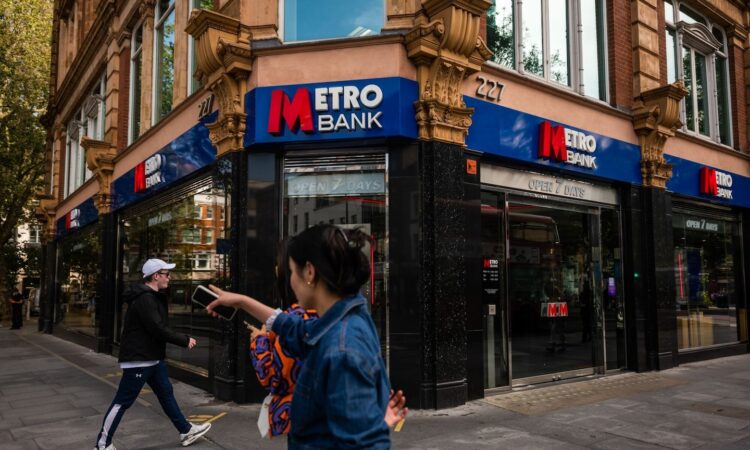
Last weekend, Metro was forced into an emergency balance-sheet restructuring to remain viable. The firm was founded in 2010 with a simple strategy: “Metro Bank sees its banking business as a retail operation more akin to Apple than the Bank of England,” wrote co-founder Vernon Hill. “We open stores, not branches. We recruit colleagues, not employees.”
The problem is that banking is nothing like retailing. Unlike at Apple Inc., products don’t disappear from inventory when the customer leaves the premises — they remain on a bank’s balance sheet for years. Banks retain risk long after a customer has a right to return their new iPhone. The credit losses they suffer weigh a lot heavier than shrinkage.
Metro learned the hard way the cost of under-resourcing balance-sheet management in favor of same-store sales. In 2019, it was forced to raise fresh capital, not to fund growth but rather to fill a hole that emerged after management miscalculated the risk embedded in a pool of commercial real estate loans. New management was brought in, but the model remained intact.
Yet by then, physical retail was becoming increasingly outmoded alongside the growth of digital alternatives. Unfortunately for Metro, it had spent years building up an expensive branch footprint. Apple co-founder Steve Jobs “believed the Apple stores should be in high-end malls and on high streets, areas with a lot of foot traffic, no matter how expensive the cost per square foot,” wrote Hill. “He and I both believe the best site is almost always worth the price.”
Metro would routinely spend as much as £4 million ($5 million) fitting out new locations, often ripping out upper floors of a newly acquired site to create a double-height entrance. The bank’s network of 76 branches sits on its balance sheet at a value of around £720 million, representing a much higher share of net assets than at any other UK bank. Many leases were signed on long contracts and are difficult to break, and the freehold properties are capitalized at high rates. Analysts at Autonomous Research refer to a “property poison pill” that makes Metro unappetizing for potential bidders even at its lowly current market cap of about £86 million, down from as high as £3.6 billion in 2018.
Such high valuations could be justified if the branches were sufficiently productive. Apple pulls in $40 million annually from its regular stores, and $100 million from its best. But last year, Metro generated less than £7 million per branch in revenue and, after costs, the group swung into a loss. This year, more than 90% of income is absorbed by costs.
The balance-sheet restructuring gives Metro time. One advantage of a physical network is the loyalty it engenders among customers. On the call announcing its capital raise, management declined to comment on how deposits held up in the preceding days, but those flows represent a critical barometer for the model.
To improve productivity, management offered to cut costs and focus on less-vanilla lending. The pivot on lending is a result of a very banking-oriented problem. Regulators have refused to allow Metro to use internal models to calculate capital requirements and free up capital in standard residential mortgages. The models it’s obliged to use instead incentivize the bank to do more specialized lending.
Through it all, management remains committed. “There is nothing wrong with the Metro business model,” said Chief Executive Officer Daniel Frumkin on the call. Investors who’ve stuck with the shares as they’ve dropped almost 70% from their February peak should at least be relieved that bankers are now in control rather than retailers.
More From Bloomberg Opinion:
• Too Much Lending Risk Is Growing Under the Radar: Paul J. Davies
• Some Banks Are Actually Sticking With WFH: Lionel Laurent
• The Emerging UK Political Brawl Over Savings: Ashworth & Trow
This column does not necessarily reflect the opinion of the editorial board or Bloomberg LP and its owners.
Marc Rubinstein is a former hedge fund manager. He is author of the weekly finance newsletter Net Interest.
More stories like this are available on bloomberg.com/opinion





